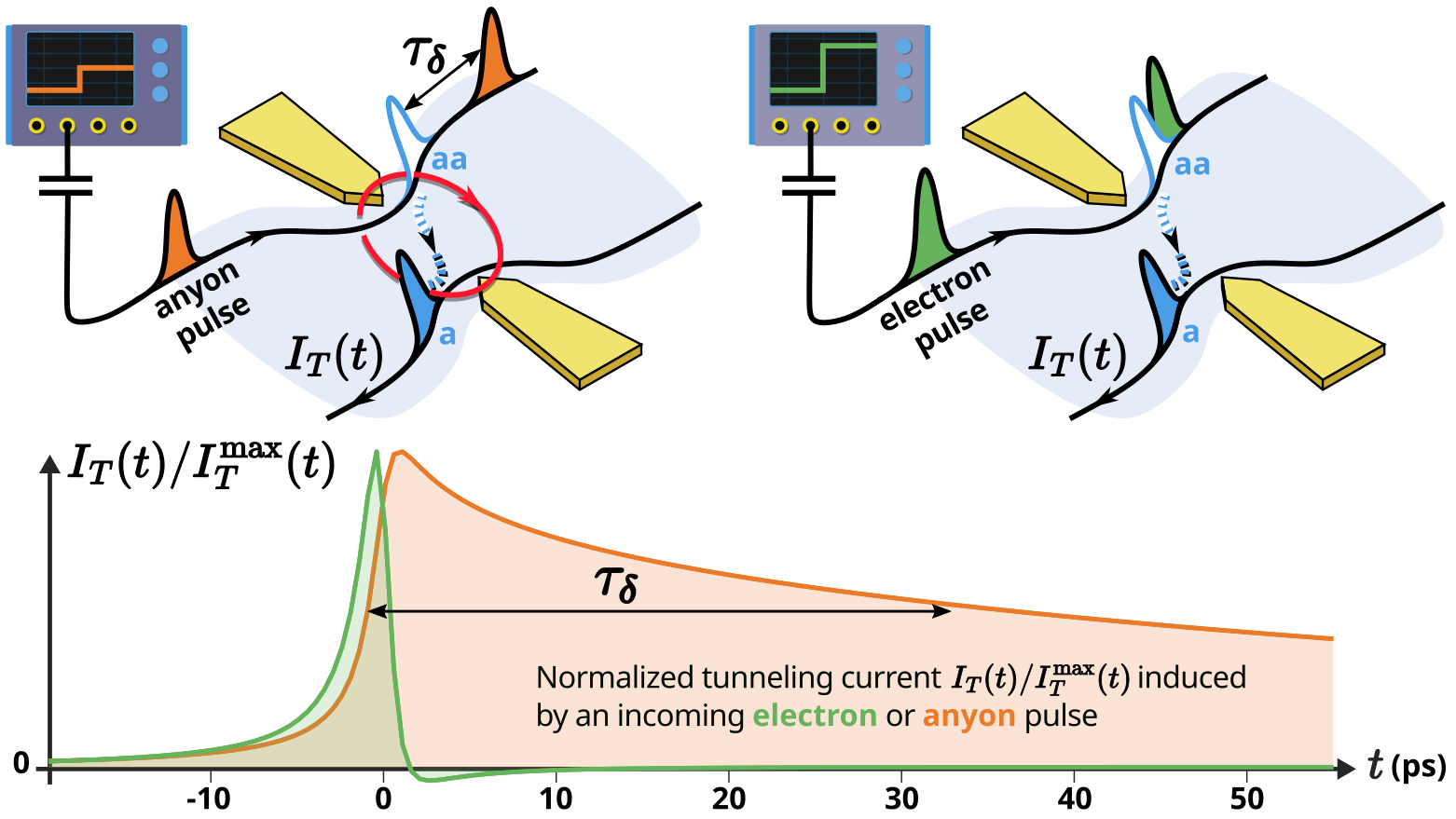Hong-Ou-Mandel interferometry plays a crucial role in this study, allowing access to temporal dynamics on such a short timescale. This technique involves emitting a second anyonic pulse after a variable time delay, controlled with a precision of 10 ps. Measurements of the correlations of electrical current fluctuations as a function of the time delay between the two pulses allow direct probing of the characteristic tunneling time.
The results reveal a spectacular effect of anyon braiding on tunnel dynamics, leading to an increase in the characteristic tunneling time. It is determined by the temporal decay of the anyon correlation function, which can be understood as the duration over which the memory of the anyons is erased. It increases as the temperature and scaling dimension, which characterize the dynamics at the edge of a fractional quantum Hall fluid, decrease. When an electronic pulse (with charge e) is emitted at the entrance of the QPC, the braiding phase is trivial, and memory effects are suppressed. The characteristic tunneling time is then determined by the temporal width of the electronic pulse, as naively expected. This study illustrates the influence of anyon braiding on their physical properties (and notably their dynamics) and opens new pathways for characterizing the exotic properties of anyonic excitations.

Tunneling dynamics of electrons and anyons. A generator emits an anyon pulse (orange) propagating towards the QPC (gold). Anyon braiding leads to the tunneling of an anyon-antianyon pair (a-aa, blue) long after the anyon pulse has exited the QPC. For electron emission (green), tunneling occurs immediately after the electron crosses the QPC. Consequently, the tunneling current decays rapidly for electrons and slowly for anyons.
More:
M. Ruelle et al., Time-domain braiding of anyons, Science 389, eadm7695 (2025)
Affiliation author:
Laboratoire de physique de L’École normale supérieure (LPENS, ENS Paris/CNRS/Sorbonne Université/Université de Paris)
Corresponding authors : Gwendal Fève and Gerbold Ménard
Communication contact: Communication team










